ACAP releases a Species Infographic for the Northern Giant Petrel, the 18th and latest in the series
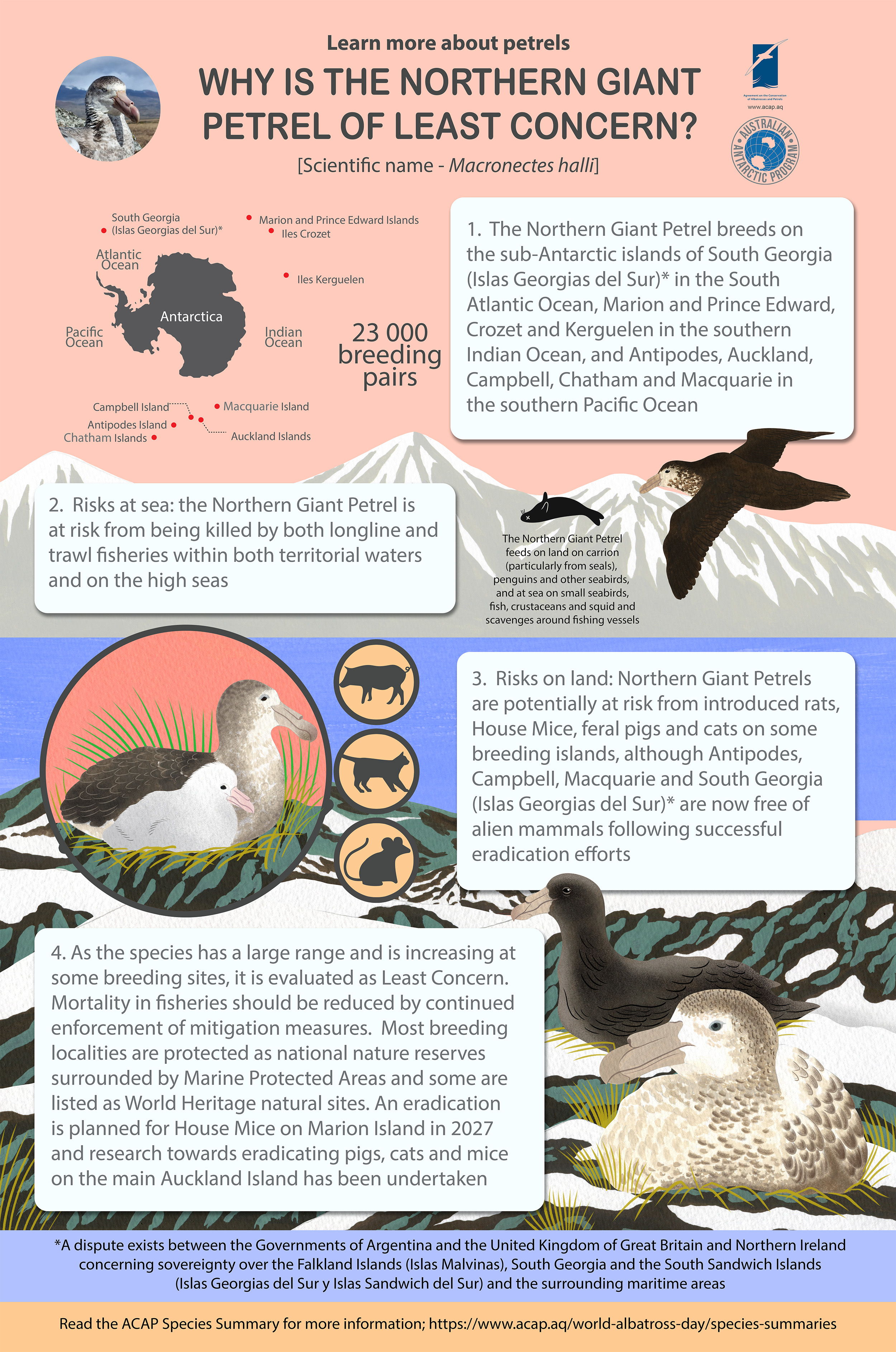 The latest ACAP Species Infographic released today, the 18th to be produced in the 31-species series, is for the Northern Giant Petrel Macronectes halli (Least Concern). It is the third to be produced for an ACAP-listed petrel, following those for the Near Threatened Grey Petrel Procellaria cinerea and the Vulnerable White-chinned Petrel P. aequinoctialis. The other 15 infographics are all for albatrosses. It is also being produced in the official ACAP languages of French and Spanish.. These versions will be released soon.
The latest ACAP Species Infographic released today, the 18th to be produced in the 31-species series, is for the Northern Giant Petrel Macronectes halli (Least Concern). It is the third to be produced for an ACAP-listed petrel, following those for the Near Threatened Grey Petrel Procellaria cinerea and the Vulnerable White-chinned Petrel P. aequinoctialis. The other 15 infographics are all for albatrosses. It is also being produced in the official ACAP languages of French and Spanish.. These versions will be released soon.
 Northern Giant Petrel chick on Marion Island, watercolour by ABUN artist Andrea Siemt, after a photograph by Liezl Pretorius
Northern Giant Petrel chick on Marion Island, watercolour by ABUN artist Andrea Siemt, after a photograph by Liezl Pretorius
The ACAP Species Infographic series has been designed to help inform the public, including school learners, of the threats faced by albatrosses and petrels and what is being and can be done to combat them. They serve to complement the more detailed and referenced ACAP Species Assessments, the concise and illustrated ACAP Species Summaries and the ACAP Photo Essay series. English and Portuguese language versions of the infographics produced to date are available to download here. French and Spanish versions can be found in their respective language menus for the website under Infographies sur les espèces and Infographía sobres las especies.
The 18 infographics produced to date may be freely downloaded at a high resolution to allow for printing professionally in two poster sizes (approximately A2 and A3). .Please note they are only being made available for personal use or when engaging in activities that will aid in drawing attention to the conservation crisis faced by the world’s albatrosses and petrels – when ACAP will be pleased to receive a mention. They should not be used for personal gain.
Work has now commenced on producing the infographics for the Southern Giant Petrel M. giganteus, sponsored by the Australian Antarctic Division.
The ACAP Species Infographics are being created by Thai illustrator Namasri ‘Namo’ Niumim from Bangkok. Namo is a graduate of the School of Architecture and Design, King Mongkut’s University of Technology Thonburi with a Bachelor of Fine Arts in Communication Design.
With thanks to Pep Arcos, Jonathon Barrington, Karine Delord, Johannes Fischer and Richard Phillips for their help.
John Cooper, Emeritus Information Officer, Agreement on the Conservation of Albatrosses and Petrels, 17 January 2025

 English
English  Français
Français  Español
Español 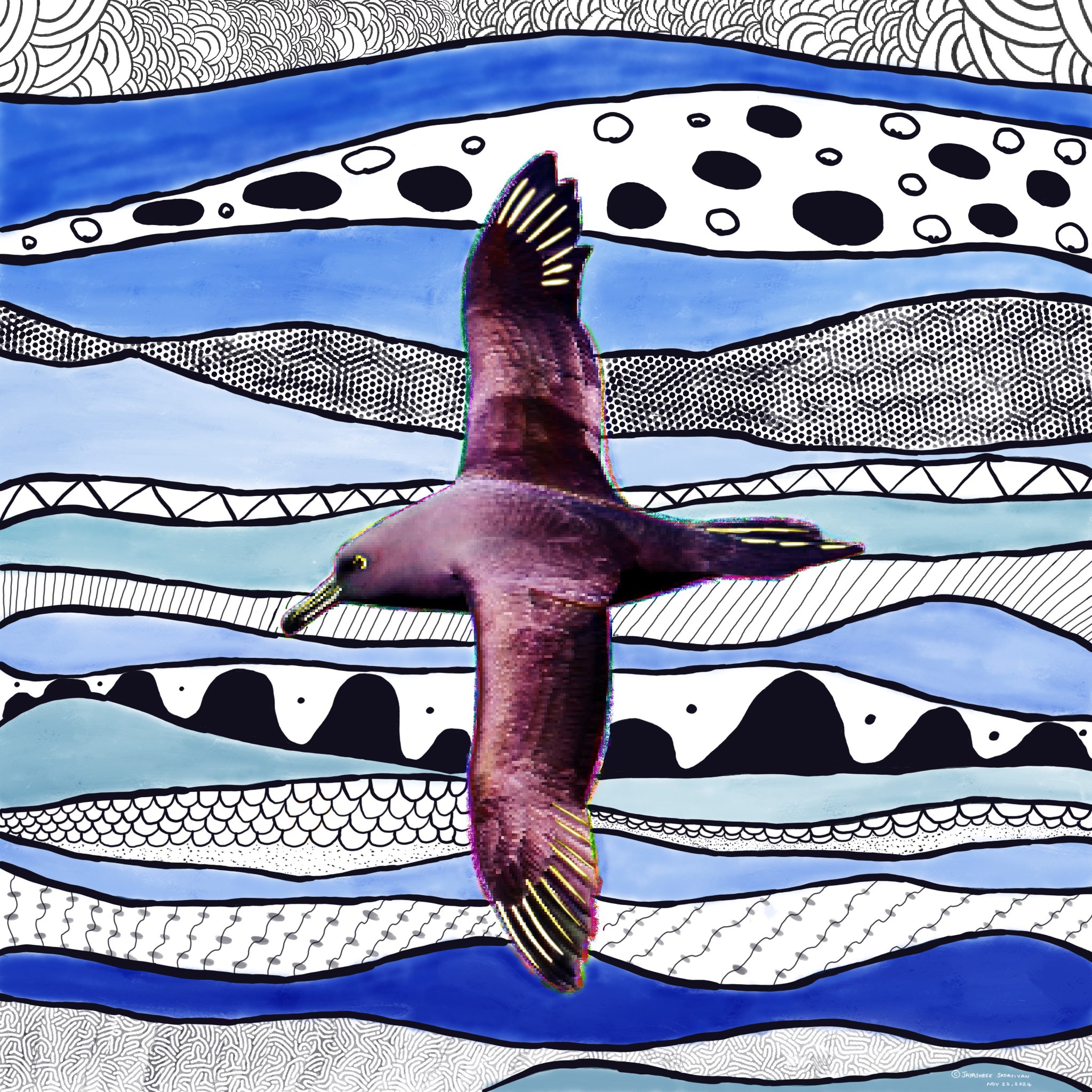 Sooty Albatross by ABUN artist Jayashree Sadasivan for the “Conservation Campaign for Marion Island”. Digital, after a photograph by Stefan Schoombie
Sooty Albatross by ABUN artist Jayashree Sadasivan for the “Conservation Campaign for Marion Island”. Digital, after a photograph by Stefan Schoombie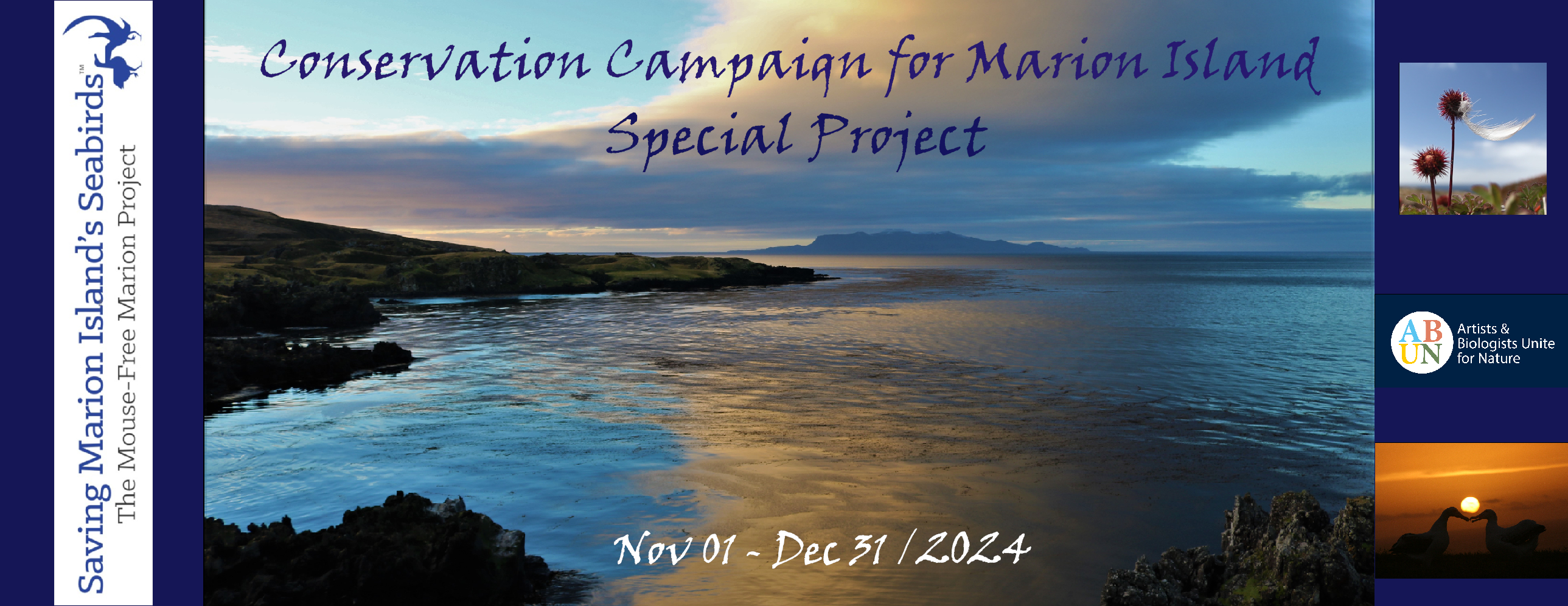
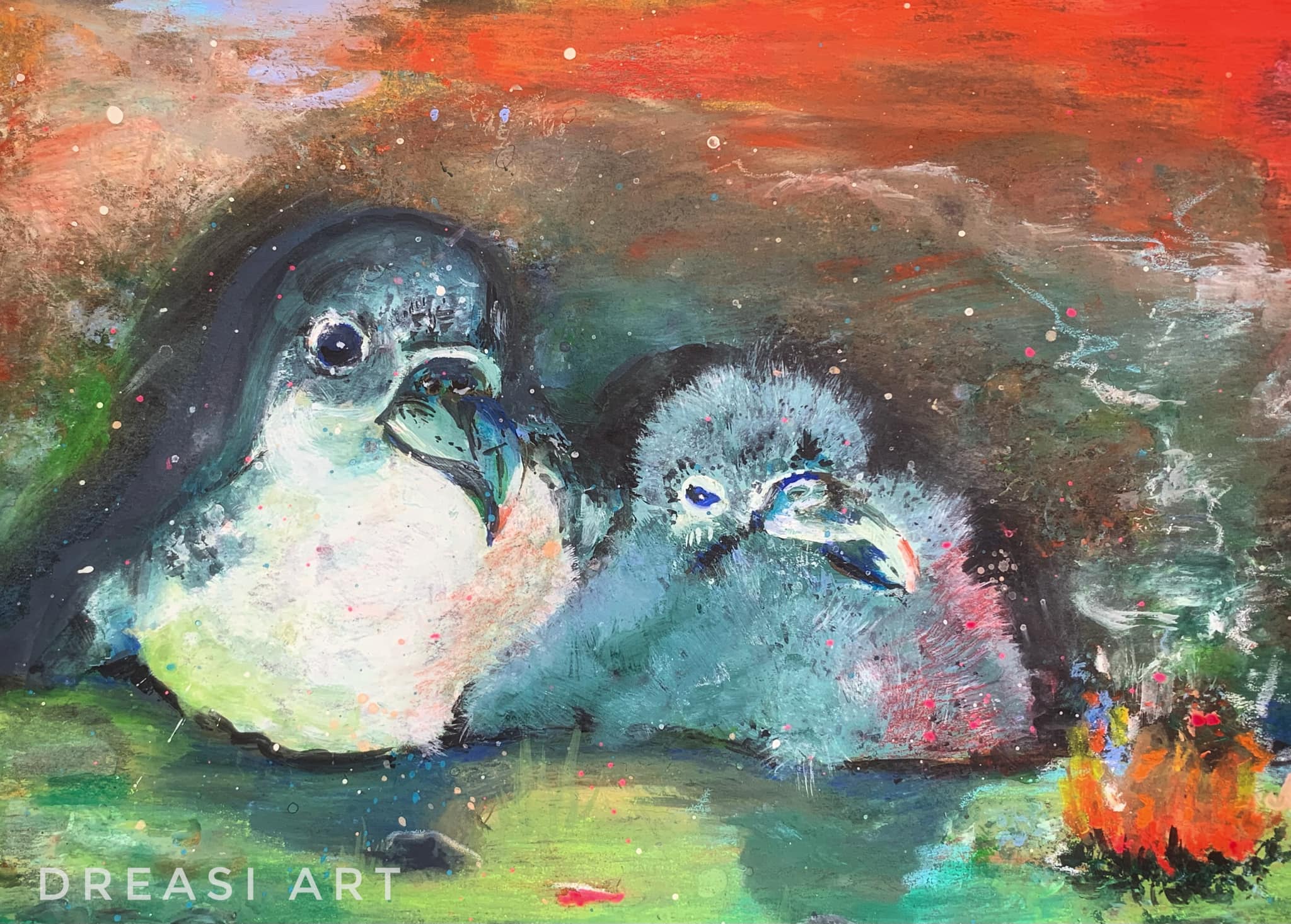
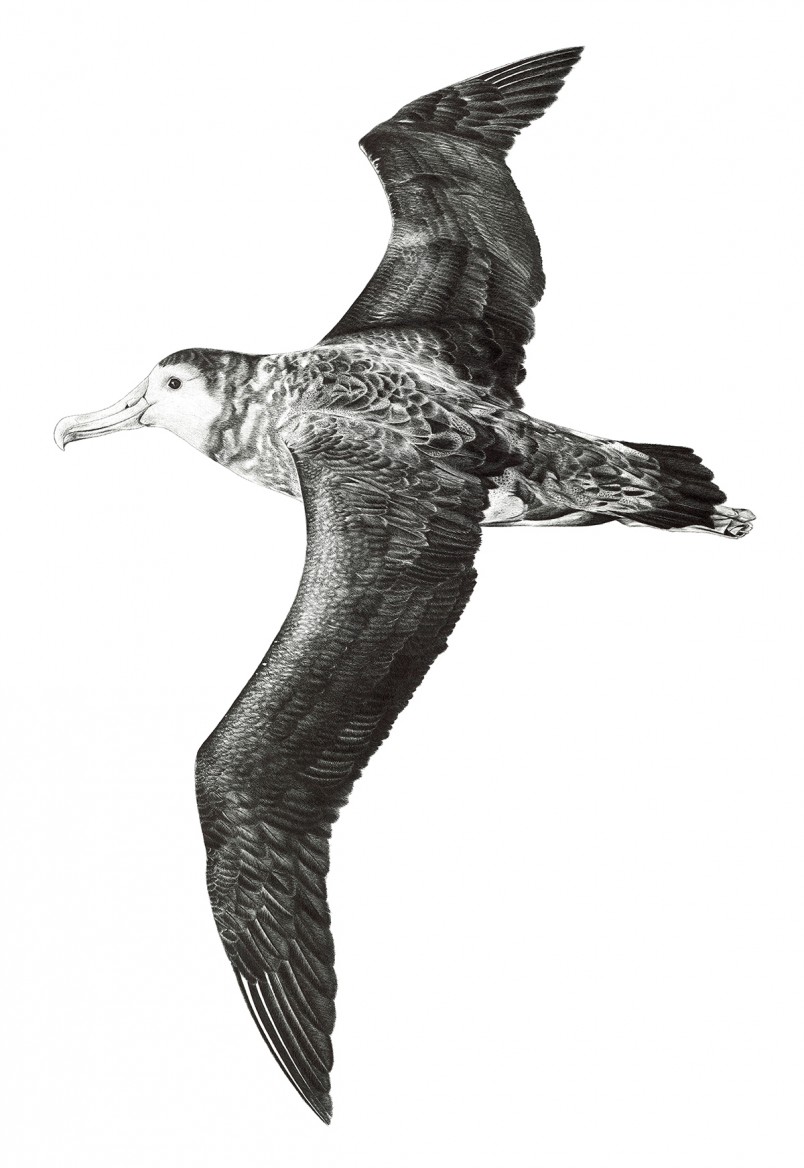




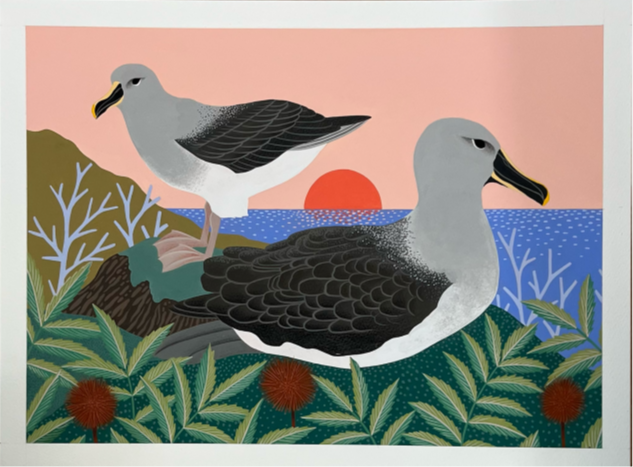

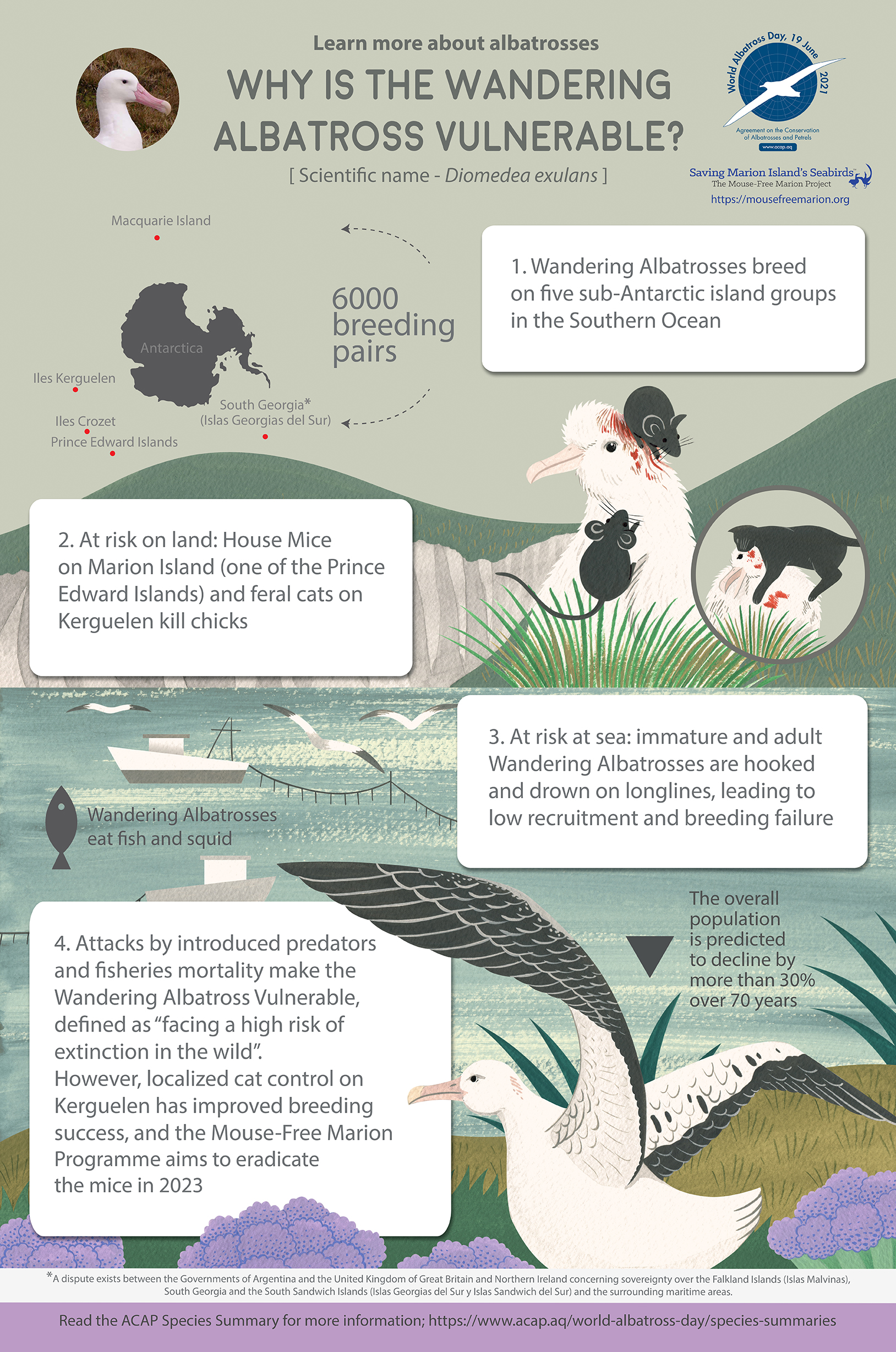
 Namo produced this poster of the four albatrosses that breed on the island for the Mouse-Free Marion Project, using artwork from her ACAP infographics. You can
Namo produced this poster of the four albatrosses that breed on the island for the Mouse-Free Marion Project, using artwork from her ACAP infographics. You can